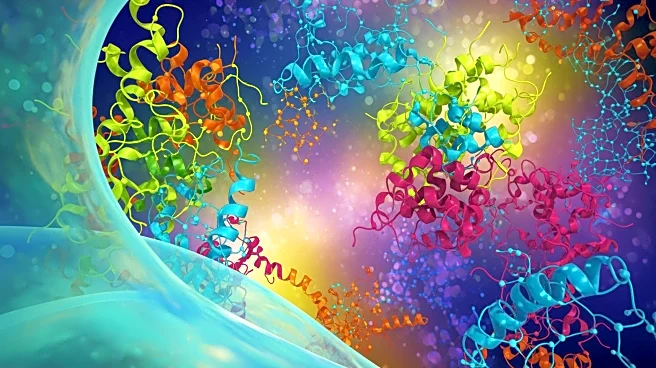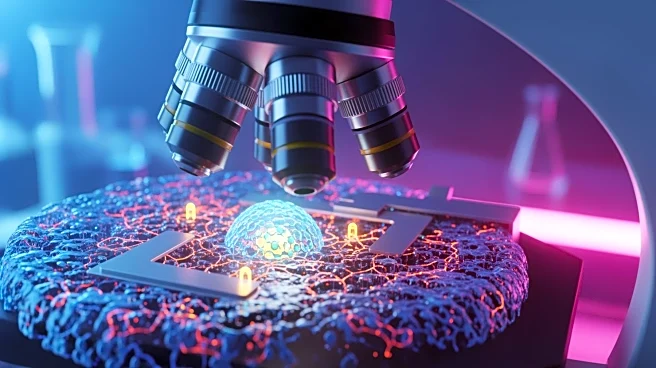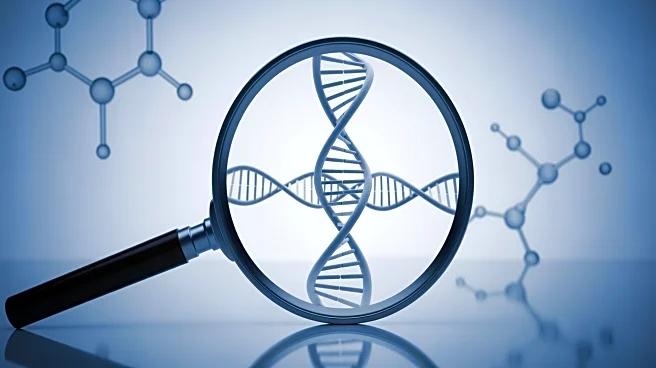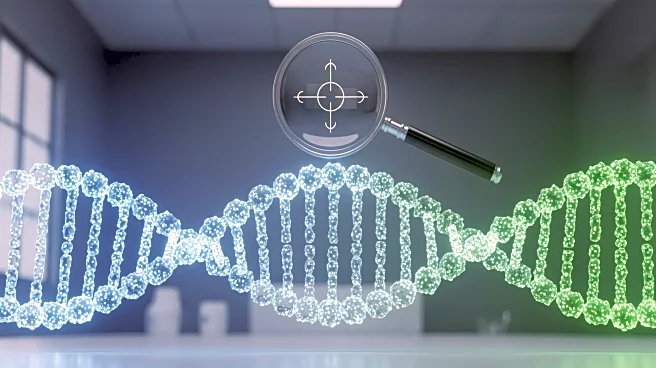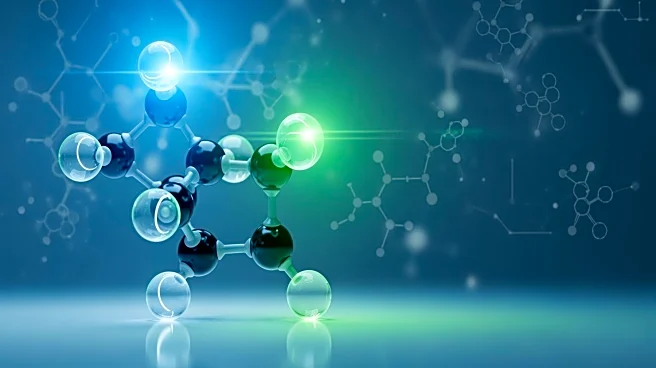What's Happening?
A team led by Christian Hackenberger has developed a novel protein mapping strategy called DarT labelling, which utilizes deazaflavin-diazirine energy-transfer labelling. This technique employs deazaflavin,
a small organic molecule, as a photocatalyst that, when exposed to blue light, transfers energy to a diazirine probe. The resulting carbene reacts with amino acids, allowing for precise tagging of proteins within cells. DarT labelling has demonstrated effectiveness both on cell surfaces and inside living cells, identifying over 150 enriched proteins, including adhesion molecules and glycoproteins. This method offers high spatial precision without the toxicity associated with previous systems.
Why It's Important?
The DarT labelling technique represents a significant advancement in the study of protein interactions within cells. By providing a non-toxic method for tagging proteins with nanometre precision, researchers can better understand cellular processes and molecular interactions. This has potential applications in drug development, disease research, and the study of cellular signaling pathways. The ability to map proteins quickly and accurately could lead to breakthroughs in understanding complex biological systems and developing targeted therapies.
What's Next?
Further research will likely explore the application of DarT labelling in various biological contexts, potentially leading to new insights into cellular communication and disease mechanisms. The technique's ability to map proteins with high precision may be leveraged in drug discovery and the development of personalized medicine approaches. Researchers may also investigate the integration of DarT labelling with other proteomic technologies to enhance its capabilities.
Beyond the Headlines
The development of DarT labelling underscores the importance of innovative approaches in molecular biology, highlighting the potential for small organic molecules to revolutionize protein mapping techniques. This advancement may pave the way for new methodologies in studying transient protein interactions and their roles in health and disease.
